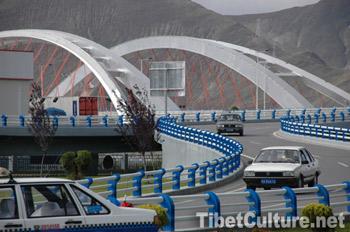This year marks the 50th anniversary of the Democratic Reform of Tibet. With assistance from the central government and other provinces, the Autonomous Region's infrastructure has been improved and its economy continues to develop.
Maizhokunggar is a county of Lhasa, capital of Tibet Autonomous Region.
It modernized quickly since highways were built and power lines were erected.
The county's Zhikong Hydroelectric Power Station went into operation two years ago. It can generate over 400 million kilowatt hours power annually, becoming an important part of Tibet's power supply.

Thanks to the project, Ser Ri's family said goodbye to their old home.
This pair of oil lamps is two to three hundred year's old. They were replaced when Ser Ri bought a gas lamp.
Local resident Ser Ti said, "We used it during the 70s. Now the power station generates enough electricity, we don't have to use the gas lamp."
The new power station brings light and a modern life style.
It took thirty years to set up a multiple resource system, including hydropower, geothermal heat, wind power and solar power.
Continuing improvements to infrastructure has helped the rapid development of the local economy.
Qiangba Puncog, chairman of Tibet Autonomous Regional Government, said, "Tibet's public expenditure is 30 billion yuan annually. 90 percent of our spending is given by the central government."
In the past 5 decades, the central government has invested 200 billion yuan on infrastructure in Tibet. And the tourism industry has been encouraged to help the local economy.
(CCTV February 24, 2009)